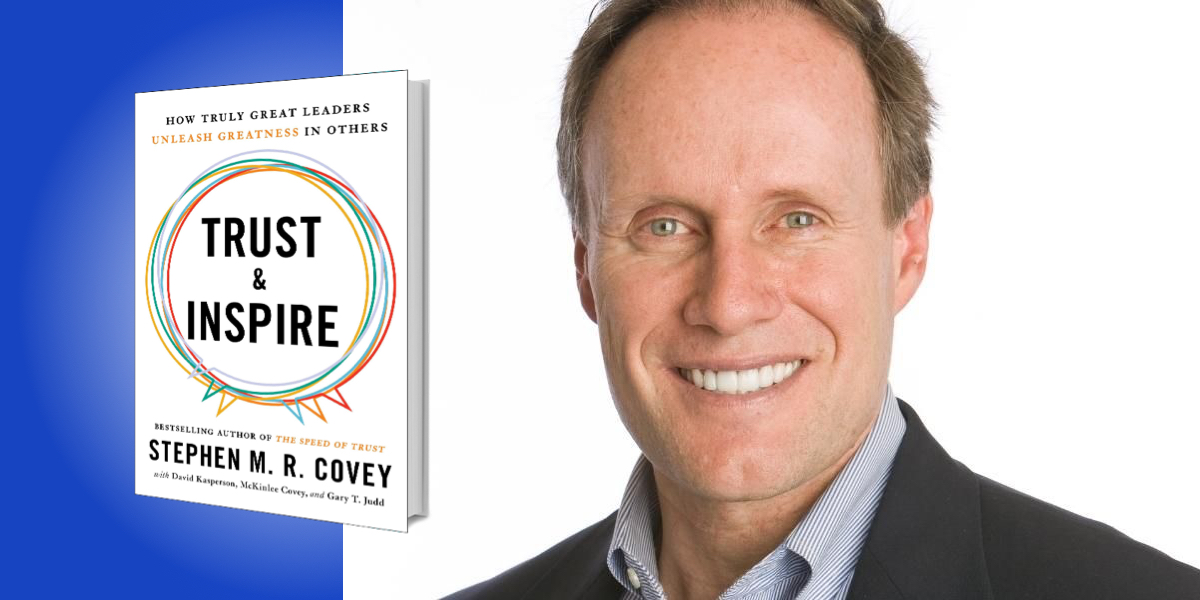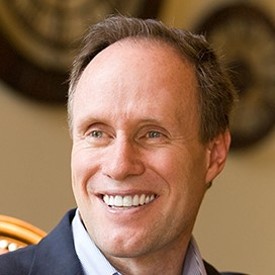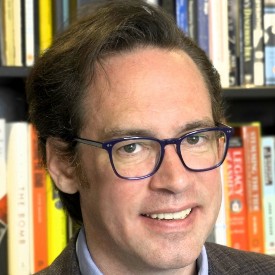Stephen M. R. Covey is the New York Times best-selling author of Speed of Trust. He is formerly the CEO of Covey Leadership Center, which became the largest leadership development company in the world under his leadership. He is currently the Global Practice Leader of Global Speed and Trust Practice, a professional consultation firm.
Below, Stephen shares 5 key insights from his new book, Trust & Inspire: How Truly Great Leaders Unleash Greatness in Others. Listen to the audio version—read by Stephen himself—in the Next Big Idea App.
1. The life—the power—is in the seed.
The highest recorded temperature on Earth is a sizzling 134 degrees Fahrenheit, set in July of 1913 in California’s Death Valley. Nothing grows in Death Valley because it’s so hot and dry. Average rainfall is one to two inches a year. Not long ago, a total of only half an inch of rain fell in a forty-month period.
Amazingly, all that changed in the spring of 2005. For no apparent reason, six inches of rain fell over a brief period in the winter of 2004. When spring arrived, observers were stunned to see a rich carpet of wildflowers completely covering the floor of Death Valley. Maybe the place isn’t dead after all. In fact, the late Sir Kenneth Robinson, British author and international adviser on education, argued in a stirring TED Talk that it would be better called “Dormant Valley.”
People are a lot like that. We have greatness inside each of us, though sometimes it is as dormant as the wildflowers in Death Valley. The seed is always there, waiting for the conditions to flourish. Like those six inches of rain, truly great leaders can awaken the potential within a person. Approaching leadership like a gardener, these leaders recognize that the life—the power—is in the seed. They curate conditions in which a person can flourish. As a result, they see that person rise beyond every imaginable expectation. I call this approach to leadership Trust & Inspire.
2. The world has changed, but our style of leadership has not.
We live in a time of unprecedented change and disruption. The amount of change, the type of change, the pace of change is unrelenting. The nature of work itself has changed, and is far more collaborative, innovative, and creative. The nature of the workplace has changed with the meteoric rise in remote work, hybrid work, intentionally flexible work, or work from anywhere. The nature of the workforce has changed, composed of five generations who define success and meaning in different ways. The very nature of choice undergirding all of these forces has changed as people move from multiple choice to infinite choice. While the world has changed so much, our style of leadership has not.
“Trust & Inspire leaders are authoritative without being authoritarian, strong without being forceful, and decisive without being autocratic.”
The Command & Control style of leadership is still prevalent, flowing heavily out of the industrial age. It’s about getting people to get things done—which isn’t so much “bad” as it is incomplete. It’s old-school, it’s carrot and stick, and while it has produced results in the past, it is past its expiration date. Management thinker Gary Hamel has pointed out that most of the essential tools and techniques of modern management were invented in the nineteenth century, not long after the end of the American Civil War. If you put a 1960s-era CEO in a time machine and transported them to today, Hamel said, “[that CEO] would find a great many of today’s management rituals little changed.”
That being said, we have made significant improvements. Today’s Command & Control tends to be more of an Enlightened Command & Control, but it’s fundamentally the same—we’ve just gotten better at it. We’ve brought emotional intelligence and human resources to it. More carrot, less stick. But it continues to prioritize performance over people.
Trust & Inspire leaders don’t minimize performance. On the contrary, they actually produce far better performance by elevating the focus on people to the same level as the focus on performance. Their approach is about getting results in a way that grows people. Rather than being soft or weak, Trust & Inspire leaders are authoritative without being authoritarian, strong without being forceful, and decisive without being autocratic. They can control without being controlling. Trust & Inspire leaders achieve unparalleled performance around both tasks and relationships. Trust & Inspire is a breakthrough because it’s a break-with the traditional Command & Control. It’s not different by degree, it’s different in kind.
3. There are two epic imperatives for every organization.
The first epic imperative is creating a high-trust culture that inspires. A culture that attracts, retains, and engages the best people—and brings out the best in people, thus winning the ongoing war for talent. In other words, win in the workplace. The second imperative is collaborating and innovating successfully enough to stay highly relevant in a changing world. In other words, win in the marketplace. If we cannot deliver on both epic imperatives, then we won’t be able to sustain success. The sequence matters. In order for us to win in the marketplace, first we need to win in the workplace.
You can’t Command & Control your way to a high-trust culture that inspires, nor can you Command & Control your way to collaboration and innovation. Command & Control tends to lean heavily on management practices to accomplish these tasks, and it’s not working because people don’t want to be managed, they want to be led.
Let me state that I’m a big fan of management. We need great management to succeed, but we also need equally great leadership. Trust & Inspire leaders manage things, and lead people. “Things” include processes, systems, structures, schedules, inventories, supply chains, financials, tools, operations—the numbers. These are all necessary components that need to be well-managed with skill and efficiency. You’ll have a hard time winning in the workplace or marketplace without this. It’s necessary, but insufficient.
“Be efficient with things; effective with people.”
Command & Control is perfectly suited to managing things—but too often leaders become so good at managing things that it becomes the prevailing paradigm for how they approach people. As Abraham Maslow put it, “He that is good with a hammer tends to think everything is a nail.” People are not things. People have autonomy, talents, skills, initiative, creativity. People don’t want to be treated like machines. Be efficient with things; effective with people. The people are the key to these two epic imperatives.
4. Trustworthy vs. trusting.
It is possible to have two trustworthy people working together and yet have no trust between them because neither person is willing to extend trust to the other.
When most people think about trust, they think only of trustworthiness. That’s not a bad start seeing as it’s difficult to have real, meaningful trust between people if one or both parties aren’t worthy of it. Most Command & Control leaders are trustworthy. Particularly those in the Enlightened Command & Control category. The kicker is that the challenge is not a lack of trustworthy people—the biggest challenge is trustworthy people who do not extend trust to other trustworthy people.
I can’t tell you how many leaders I’ve worked with who are credible and authentic, care deeply about both their work and people, yet they won’t extend enough trust for it to really matter. The strength of trusting enables you to get results in a way that also grows people. Three growth outcomes that flow from trusting are as follows:
1. People rise to the occasion and perform better.
2. People develop new capabilities. As things change, they can keep up.
3. People reciprocate and return the trust to you.
5. Inspiring others is the new competitive advantage that anyone can harness.
We’ve been focused on engagement for two decades, and though engagement is vital to people and performance, there is a new frontier. Inspiration is the new engagement. A study from Bain & Company shows that inspired employees are 125% more productive than satisfied employees, and even 56% more productive than engaged employees.
Inspiring others is a learnable skill. Most people equate inspiration to charisma and think, “Well, I’m not charismatic.” But there are many charismatic people who are not inspiring. There are even more people who no one would describe as charismatic, but are extraordinarily inspiring.
“Inspiration comes from connecting with people and connecting to purpose.”
“Inspire” comes from the Latin word inspirare, which means to breathe life into. When we inspire, we light the fire within. Inspiration comes from connecting with people and connecting to purpose. We connect with people at the personal level through caring and belonging. When people have a sense that you care, it inspires them. People don’t care how much you know until they know how much you care. The same is true of creating a sense of belonging on a team. Then connecting to purpose inspires. The beauty is that you can embed purpose, meaning, and contribution into almost any role, into almost any organization.
Wherever there is greatness or achievement, you find a Trust & Inspire leader. People aren’t moved to greatness; they are inspired to it. There is always someone who paved the way. There is always someone who trusted and believed in others. And there is always someone who was able to light the fire within for themselves and others.
We can be that leader. Our colleagues, organizations, family, friends, and society all need it. This is the new way to lead, and a better way to live: Trust & Inspire.
To listen to the audio version read by author Stephen M. R. Covey, download the Next Big Idea App today:































